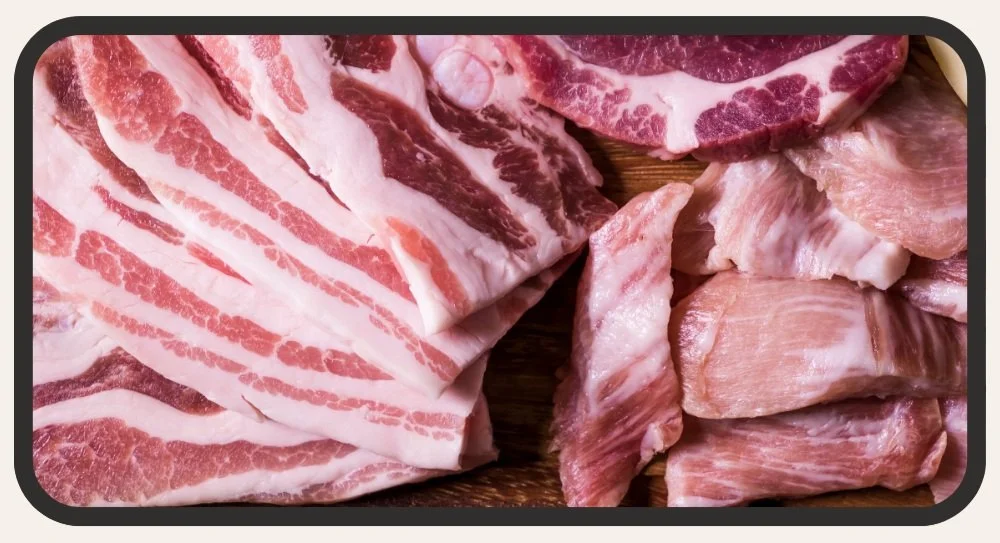The fibre revolution: Understanding colorectal cancer & the modern diet.
As a Nutritionist it’s important to keep up with the latest scientific information. It’s not ‘breaking news’ that the UK population is seriously lacking in fibre, we have been for years. But, while swiping and scrolling I caught a great article from the Huffington Post, paraphrased from a piece by Dr Karan Rajan. It was his account of his diet, sharing that was that he felt he was doing everything ‘right’ for a ‘modern-day healthy diet’ and for his gut health. He shared that from the outside, his body seemed ‘operational’. It was only when he delved deeper into the health tests that he realised his fibre-game was greatly lacking. But don’t panic, this isn’t to send you into a tail-spin worrying about what could be wrong with your diet, instead sit back, get the reading specs on and get ready to be open-minded to knowledge growth and dietary development.
The Data
In recent years, we have had great public health campaigns like Bowel Babe, GetOnaRoll and ‘Life-saving Poo’ to raise the public’s understanding of bowel cancer and prioritise bowel health. It’s well-timed as are starting to cement our understanding of the correlation between long-term poor fibre intakes and concerning trends in gut health. A prominent cancer specialist and professor of medicine called this current time a ‘growing global phenomenon’ due to rising colorectal cancer diagnoses. The Lancet studied the onset rates in 50 countries and found that 27 out of the 50 countries had rising incidences. This study’s data has shown a 3.6% increase in early-onset bowel cancer diagnosis. This is the sharpest increase in rates, with England being the 4th fastest country’s onset rate, and the fastest increasing rate in Europe. Thought that was enough evidence… a study from the British Medical Journal (BMJ) found that the age group of 20-29 years had the greatest increase (7.9%) in diagnoses of colorectal cancer between 2004-19. This is in comparison to a 4.9% increase in 30-39 year olds, and a 1.6% increase in 40-49 year olds.
While Cancer Research UK reassures that we do not need to panic over these numbers, the upward spiking trend of diagnoses under the age of 49 years is certainly something healthcare professionals like myself are curious to monitor, observe and act upon.
The Why?
At first, my thoughts were purely observational. However, I've observed a distinct increase in protein prominence and a culling of carbohydrate intake in the ‘modern healthy diet’. Once again, we Nutritionists are fighting the myth that carbs are the enemy.
The Rise of Protein Overload
A bit of background on me, I work predominantly in the supplement industry and I’ve noticed that the protein sector has gone ‘wild’. The global protein supplements market size was valued at 5.83 billion USD in 2022 and is expected to grow at a compound annual growth rate of 8.0% from 2023-30. Now, that’s the data side, what about the real-life experience? If I had a pound every time I am asked about protein intake, I’d be lying on a private island somewhere, not writing this article. So, when did protein become so popular? Mark my words, there is nothing inherently wrong with protein, it’s just another essential part of the diet. No more important than fat, fibre, carbohydrates, vitamins, minerals etc. But the way protein is marketed right now, you’d think it was the elixir for health. Ask the majority of people what protein does and they would attribute it to a ripped body of muscles. Ask the majority of people how to lose weight, improve their wellness, enhance their masculine physique and they will talk about their protein intake. But, it becomes potentially dangerous when it is the sole focus of one's health journey. The mass media has done a really great job of marketing protein as something ‘sexy’, that leads to cut bodies that are amazing to gaze upon. What has the media done to raise the profile of fibre? Not a lot! I think if we were to play a game of word association with fibre you’d think of words like -poop, brown, bland… Not sexy at all.
Moreover, there is tonnes of misinformation spread through social media, ‘gymspo’ influencers and gossip magazines, stating that we need so much more protein than our body requires. Truly when was the last time you saw someone with a ‘gymspo’ account bragging about their fibre intake? Chance would be a fine thing! But, I can guarantee you they’ve made posts about how to increase their protein, protein for their nighttime gains, and how they get 200+ grams worth of protein into their diet. I’m here to tell you this is NOT… realistic or healthy for the majority of the population. It’s also a falsehood that eating protein makes you ripped.
Protein and Colorectal Cancer
It’s important to note that the correlation isn’t just about quantity, but quality too. The Cancer Council stated that the risk of developing bowel cancer goes up 1.18 times for every 50 grams of processed meat eaten per day. Processed meats have long been associated with bowel cancer, and have been classified as class 1 carcinogens by the World Health Organisation. The definition of a Class 1A carcinogen is when ‘there is sufficient evidence of carcinogenicity in humans. In other words, there is convincing evidence that the agent causes cancer.’ Specifically in the case of processed meat ‘this classification is based on sufficient evidence from epidemiological studies that eating processed meat causes colorectal cancer.’ This class includes, salami, smoked bacon, sandwich ham, corned beef, beef jerky, biltong, frankfurt sausages and more. Whereas, Red meat has been classified as a Class 2A carcinogen with probable positive correlations to cancer. This includes ‘all mammalian muscle meats’, beef, veal, pork, lamb, mutton, horse and goat.
There is research to suggest that the overconsumption of protein isn’t the main cause but is a result of the exclusion of fibre due to the increase in the macronutrient, protein. Results from a 2017 meta-analysis of 21 studies found no significant association (1.006 (95% CI = 0.857–1.179)) between dietary protein intake and colorectal cancer. Conversely, a 14-year longitudinal study of 44,834 adults, resulted in 539 incidences of colorectal cancer. The study revealed that replacing animal proteins with low GI plant proteins did decrease the risk of rectal cancer, but not colon cancer.
As always the causation is never likely to be just the one element. However, multiple studies have summarised that protein quality and quantity is just one piece of a much larger puzzle. These studies correlated that the modern Westernised diet has a higher incidence of colorectal cancer. An imperfect marriage of a diet rich in red and processed meats, and lacking in high-fibre foods, fruits and vegetables. In conjunction with results in a 2022 BMJ publication of a 24-28 year longitudinal study, found that people in the highest risk group for the development of colorectal cancer were more likely to have diets rich in fat, added sugars and processed meats. And, lowest in dietary fibre, whole grains, calcium Vitamin B9, and D. Moreover, they were more likely to have a sedentary lifestyle, be a smoker and have a higher body mass index (BMI). It’s rarely just one cause.
It’s important to note that Fibre isn’t the only culprit for the cause of colorectal issues, it’s often multifactoral, but there are other suspected causes of early-onset bowel cancer, including:
Increase in red meat intake
Increase in ultra-processed foods (UPFs)
A sedentary lifestyle
Smoking
Excessive alcohol consumption
Genetic predisposition
According to ‘The British Nutrition Foundation’ article, women are currently eating ~148% of their daily protein needs, and men are consuming 152% of their daily requirements.
I want to make it clear that eating protein is important to maintain a healthy diet, but when we are consuming 150-200+ grams of protein per day and it is potentially poor quality it’s hard to make room for much other nutrient-dense food, which includes fibre-rich carbohydrates. An adult's recommended intake of fibre is 30 grams/day. Similar public health data that shows that we are over-consuming protein, also shows that we are underconsuming fibre. The National Diet and Nutrition Survey (NDNS) found that all adult ages were drastically under-consuming fibre by anywhere between 10.3-12.7 grams per day. This is the fibre equivalent of a standard serving of bran flakes and two slices of wholemeal toast.
Why is Fibre so Important?
The relationship between fibre intake and colorectal cancer rates has been long established. Studies conclude that between 25-30 grams of fibre is most effect in maintaining gut health. More specialised studies looked at ‘what’ fibres were most effective in reducing relative risk and they found that nutrient sources associated with the lowest relative risk for colorectal cancer were cereals, wholegrains and fruit fibres. Moreover, fibre feeds our gut microbiome which in turn produces short-chain fatty acids (SCFAs). The role of SCFAs is to protect the gut barrier, stimulate mucus production, and demonstrate protective mechanisms against inflammation that has been associated with the development of colorectal cancer.
But, fibre is no one-trick pony, it has multiple beneficial properties throughout the body. Fibre has other health benefits including:
Blood glucose management
Manage blood cholesterol levels
Supports heart health
Increases gut biodiversity
Weight management
Pros of Prioritising Fibre
Fibre is Cheaper per gram than Protein
More regular bowel movements
Reduced Bloating
Relieve Constipation
It tends to be more sustainably sourced and grown than protein
Increase Food Diversity and Interest
May lower the risk of Heart Disease and Stroke
May lower the risk of Diabetes
Maintains Satiety and Fullness
Increase Gut Diversity
Understanding Soluble and Insoluble Fibres
There are two types of fibre - soluble and insoluble. Soluble fibres bind with water and create a viscous gel-like substance. This helps to slow digestion and gut transit. Moreover, they are associated with blood glucose management and heart health. Soluble fibres can be found in foods rich in Inulin, Galactooligosaccharides (GOS) and Pectins. Whereas, insoluble fibres are unable to cannot dissolve in water, and instead act by bulking stools and promoting movement of the stool through the gut. These are found in foods rich in cellulose, arabinoxylans, and beta-glucans.
-
Avocados
Psyllium Husk
Apples
Citrus fruits
Legumes
Cereals
Chicory
Chia Seeds
Sweet Potatoes
Artichokes.
-
Grains
Nuts
Cereal bran
Oats
Barley
Potatoes
Leafy Greens
Cauliflower
Brown Rice
Corn
Green Beans
Easy Ways to Prioritise Fibre
Aim to consume 5+ fruits and vegetables a day- between fresh, frozen, and dried
Remember that half a can of beans/legumes count towards one of your five a day and are high in fibre
Mix grains (bulgar wheat or quinoa) and seeds into your salads
Replace your mid-morning bag of crisps with wholemeal crackers or nuts
Switch your white carbohydrates for brown and wholemeal varieties - bread, rice, pasta
Replace your typical animal-protein source with a plant-based source. Switching your beef mince for lentils
Switch your usual egg-based breakfast for cereals and oats with fruit.
Keep the skins on all your fruits and vegetables, just be sure to wash them thoroughly
Add a prebiotic supplement to your diet - psyllium husk and inulin
Replace plain flour with rolled oats in your cookies, pancakes and breakfast muffins
Carbs are Friends, Not Foes.
Fibre is unlikely to get the ‘sexy’ reputation that protein has, but we can dang well try! Get ready to join the fibre revolution.
Helpful Resources:
https://www.bowelcanceruk.org.uk/campaigning/never-too-young/
For more information on the signs and symptoms of colorectal cancer - NHS
References
https://news.cancerresearchuk.org/2024/12/11/early-onset-bowel-cancer-rise-global-phenomenon/
https://www.thelancet.com/journals/lanonc/article/PIIS1470-2045(24)00600-4/fulltext
https://www.frontiersin.org/journals/endocrinology/articles/10.3389/fendo.2020.00025/full
https://www.gov.uk/government/publications/sacn-carbohydrates-and-health-report



